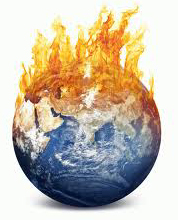 As a small side note, in case you missed my post last Tuesday, I'm not feeling very well these days, so haven't been blogging very much. But I feel pretty good today so I thought I'd do a little gobsmacking of the AGW industry.
As a small side note, in case you missed my post last Tuesday, I'm not feeling very well these days, so haven't been blogging very much. But I feel pretty good today so I thought I'd do a little gobsmacking of the AGW industry.
Everyone needs a hobby.
I discovered a terrific site called The Straight Dope the other day, which is just filled with fun, biting questions and answers.
Fun, biting questions such as:
Should a baking potato be wrapped in foil shiny side in or shiny side out?
Has a passenger ever landed a plane after the pilot was incapacitated?
Why were dinosaurs so big?
Is a bullet wound in the shoulder as harmless as the movies make it seem?
I spent the whole day going through the archives and had a terrific time.
At least, until I got to the first global warming article.
All those silly up-and-down temperature cycles that have occurred over the past 10,000 years? Pfft! Ancient history, bud! Especially in light of the literally tons of CO2 we're dumping into the atmosphere on a daily basis.
Tons, he'll tell you, tons.
And it also appeared that — just perhaps — some of his questions were a bit 'staged' so he could show off his expertise. Questions such as:
If I were an evil genius, how could I go about melting the ice caps?
I won't link to the article since I'm going to quote most of it here.
So, okay, let's say man-made global warming is going to melt the ice caps and raise sea levels up 200 feet, or whatever the latest projection is.
But just how much energy would truly be involved in such an undertaking? Bear in mind as you read his first three hypotheses that we're comparing them to what's currently spewing CO2 into the atmosphere; that is, a smattering of coal plants and factories with more emission controls imposed on them than at any time in history, a bunch of small-engine cars that are emitting less pollution than at any time in history, and a 'green' culture that condemns the slightest waste of energy as possibly heretical.
So, what exactly would it take to actually melt the ice caps?
The whole point of his article is that it gives him the opportunity at the end to 'suggest' this wild scenario where people invent these crazy CO2-spewing contraptions like factories and cars — that will do the job in no time at all!
But watch as we use his own words against him.
Watch as we fight fire with fire.
The thing to realize is the magnitude of what we're trying to accomplish. According to the U.S. Geological Survey, there are 33 million cubic kilometers of ice in the polar regions. This is grounded ice, sitting on land or the sea floor in or near Antarctica and Greenland. There's also floating ice, such as that covering the North Pole for part of the year. But the USGS rightly ignores this, since (a) the ocean level won't rise when it melts (floating ice displaces a volume of water equal to its weight — think about it), and (b) relatively speaking, floating ice is a drop in the planetary bucket.
Just as well — we'll have our mittens full with the grounded stuff. Assuming an average polar ice temperature of minus 22 degrees Fahrenheit, melting it all will take 11.3 yottajoules of energy. How much is that? Well, yotta- is the biggest metric prefix we've got—it means “add 24 zeros.” Annual world energy consumption is something like 500 quintillion joules. Multiply that by about 22,000 and you’ve got 11.3 yottajoules, which is — I have to say this — a lotta joules.
How to deliver it? At the earth's distance from the sun we receive about 1.4 kilowatts of solar energy per square meter, half of which makes it through the atmosphere to the surface. (I’ll ignore atmospheric heating.) So theoretically we could position giant mirrors in space to reflect sunlight onto the poles and melt the ice. Problem: to get the job done in a mere 20 years, our bank of mirrors will need to be roughly the size of North America. Then, too, it'll be nearly impossible to keep the mirrors aimed properly, and the melting ice will create sun-blocking cloud cover, slowing the process. So maybe Operation Space Mirrors isn't our best bet.
What about the nuclear option? Estimates of the total world nuclear arsenal vary, but a reasonable guess is a combined yield from all nuclear weapons of 5,000 megatons. Even assuming we could pump all the blast energy into the ice and not have any of it leak away, it'd still be less than a hundredth of what we need.
Fossil fuels, then? Good luck — those 11.3 yottajoules are more than a thousand times the energy contained in the entire world’s proved oil reserves (and that's assuming we can convert the energy to heat with 100 percent efficiency). Throw in all the globe's coal and natural gas and, once again, we still don't get to even one percent of what's required.
So that's what we're talking about in terms of the energy required to actually melt the polar ice and raise sea levels 225 feet, or whatever the latest projection is. (It went up 25 feet just in the time it took me to write the above)
And I note one key line that I mention in my own AGW opus:
Assuming an average polar ice temperature of minus 22 degrees Fahrenheit
In other words, according to Mr. Answer Man, the global temperature would actually have to rise fifty-four degrees just to reach the melting point of water.
And it would actually have to rise a lot higher than that, in the sense that it would naturally be cooler at the poles. And it would have to rise even higher than that, in that even if the temperature of the entirety of Antarctica climbed to 33 degrees, it would still take about 1,000 years for the whole freaking thing to melt.
So, in summation, in order to melt the polar ice caps and raise sea levels 235 feet, we would require one of the following:
A. Space mirrors the size of North America
B. One hundred times the amount of all the nuclear bombs that currently exist
C. One thousand times all the known oil reserves
D. Cow farts and your neighbor's SUV
Nicely portrayed, Mr. Answer Man! Thanks for putting it all into perspective for us.
You've been a big help.
"Oh, Doc, go on with you! Cow farts? Nobody's taking that seriously!"
French Scheme Targets Farting Cows
That was published three days ago.


 As a small side note, in case you missed my
As a small side note, in case you missed my